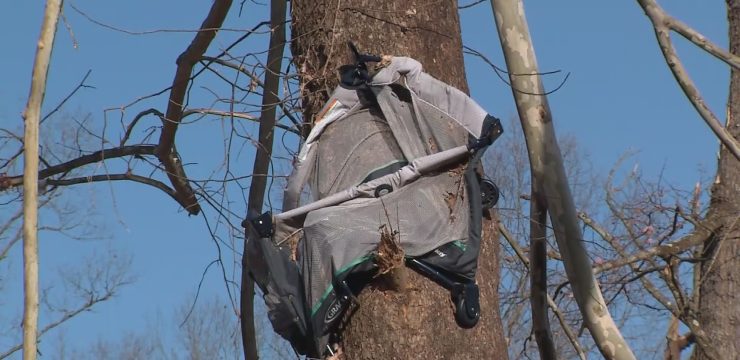In the United States, the idea of children growing up behind prison walls feels almost unimaginable—yet for dozens of young people, this is not a nightmare but their lived reality. Imagine being only 13 or 14 years old, sitting inside a cold, gray cell, and realizing that you will never see life beyond those bars again. No chance for release. No opportunity for redemption. No second chance to prove that you can change. It sounds like something out of a dark movie, but this is happening right now across America.

The U.S., often described as the land of opportunity, also carries one of the largest prison populations in the world. Hidden behind that statistic lies an even more disturbing truth—children sentenced to life imprisonment without the possibility of parole. According to Human Rights Watch and the Equal Justice Initiative, at least 79 children under the age of 14 are currently serving life sentences without any chance of release. These numbers are more than statistics; they represent young lives frozen in time, marked forever by a single mistake, and a justice system that decided their futures were not worth saving.
For many Americans, the idea of sentencing minors to life in prison feels unthinkable. After all, childhood is meant to be a time of growth, learning, and transformation. But under the current laws in several states, a child can still be tried as an adult and sentenced to life behind bars for crimes committed before they were even old enough to drive or vote. What drives such a harsh response from a justice system that claims to value rehabilitation? And what does it say about our collective understanding of mercy, morality, and justice?
The stories behind these life sentences are complex, tragic, and deeply unsettling. Many of these young offenders were involved in violent incidents—murders, robberies, or assaults—but in numerous cases, they weren’t the ones who pulled the trigger or delivered the fatal blow. Some were simply present when the crime occurred, while others were manipulated by older peers or adults into situations they couldn’t comprehend. Yet, the law often fails to consider the emotional immaturity, impulsivity, and lack of foresight that define adolescence. Instead, it treats these children as fully developed adults, erasing the nuances of youth and the possibility of change.
Behind every case lies a painful social backdrop that cannot be ignored. Most of these minors come from environments marred by poverty, systemic racism, family instability, neglect, or exposure to violence from an early age. These factors shape not only their worldview but also the choices they make under pressure. Psychologists and social workers have long argued that many of these children are products of a system that failed them long before they ever broke the law. In the courtroom, however, those circumstances rarely take center stage. The justice system often prioritizes punishment over understanding, focusing on retribution rather than rehabilitation.
One of the most well-known cases that brought national attention to this issue is that of Lionel Tate. In 1999, Tate was just 12 years old when he was convicted for the death of a 6-year-old girl during what he described as a “play wrestling” match. Despite his age and lack of intent, Tate was sentenced to life in prison without parole, becoming one of the youngest Americans ever to receive such a sentence. His case sparked public outrage and reignited a fierce debate over whether children should be tried as adults. Eventually, his sentence was overturned on appeal, but his story remains a powerful example of how the system can blur the line between childhood mistakes and adult crimes.
Critics argue that such extreme punishments do not align with modern understandings of brain development. Neuroscientific research shows that the human brain—especially the regions responsible for judgment, impulse control, and moral reasoning—does not fully mature until around the age of 25. This means that many of the children sentenced to life imprisonment acted under emotional or peer-driven impulses rather than calculated intent. Their capacity for rehabilitation and growth remains far greater than that of adult offenders. Yet, the legal system often refuses to account for this, imposing sentences that extinguish any hope for transformation.
Proponents of tough sentencing often claim that “a crime is a crime,” regardless of age, arguing that severe punishment deters others from committing similar acts. However, evidence suggests otherwise. Studies show that life sentences for juveniles do not significantly reduce youth crime rates. Instead, they contribute to cycles of trauma, hopelessness, and generational despair—factors that perpetuate crime rather than prevent it. The cost, both moral and financial, of keeping minors incarcerated for life is staggering.
In recent years, there has been a slow but notable shift in how the U.S. Supreme Court views juvenile sentencing. Landmark decisions, such as Miller v. Alabama (2012) and Montgomery v. Louisiana (2016), ruled that mandatory life sentences without parole for minors are unconstitutional, recognizing that children must be treated differently from adults. Yet, implementation varies widely among states. Some jurisdictions have revisited old cases, offering parole hearings or reduced sentences, while others continue to resist reform.
The discussion surrounding juvenile justice is not just about legality—it’s about humanity. It forces us to confront uncomfortable questions: Can a child truly be beyond redemption? Should a moment of violence, often shaped by a lifetime of trauma, define an entire existence? And can a justice system that prides itself on fairness and rehabilitation truly justify extinguishing a child’s future?
America stands at a crossroads. On one path lies continued punishment and a cycle of despair for those who made mistakes before they even understood their consequences. On the other lies compassion, understanding, and the belief that even those who have done harm can change with the right support. Rehabilitation does not mean excusing behavior—it means believing in the possibility of growth.
Ultimately, the presence of children serving life without parole reveals an uncomfortable truth about the American justice system. It exposes a deep conflict between the ideals of justice and the realities of punishment. For a nation that often calls itself a beacon of freedom, the idea of condemning children to die in prison raises profound questions about the meaning of mercy, redemption, and hope. If society truly values second chances, perhaps it’s time to extend that belief to the youngest among us—those whose greatest crime may have been growing up in a world that never gave them one.





